Category: Electrical & Engines
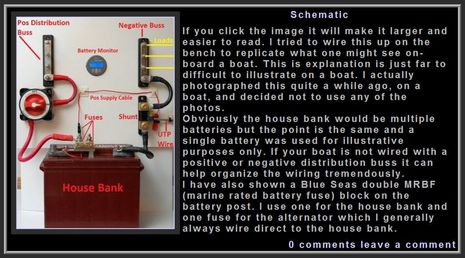
I’ve long been meaning to give a hearty shout out to a slightly odd site called Compass Marine. What’s odd is that the author — RC Collins, an ABYC certified marine electrical technician and sailor — is using an online database designed for photographers to create excellent how-to articles on subjects like Installing a Battery Monitor. But once you get used to the captioned illustration format, I think you’ll be amazed. As suggested in the screen shot above, RC built a demo 12v power system so he could photo illustrate the Victron BMV-602S installation to near perfection, and he even annotates some of his photos to further make his points. This amount of work is not trivial. Collins could use a copy editor (me too!), but he really knows his stuff and he goes to extraordinary lengths to explain what he knows…
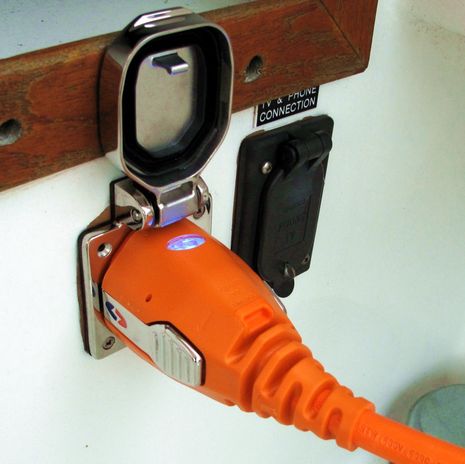
I’ve got shore power running to Gizmo right now, as I’m trying to get the batteries in tip top shape for the frigid months to come, and I feel a lot better about that situation because I recently installed the SmartPlug system above. Maybe I’m paranoid but I’ve heard of so many boat fires which started at the shore power inlet that I’m always reluctant to leave one active when I’m not around. But that 30 amp SmartPlug inlet is carefully designed to avoid heat-inducing resistance and it also contains a trip thermostat which cuts power at 200º F (just before wire insulation begins to soften). Plus the inlet is very easy to install, and when you first use the orange plug itself, you too will likely wonder why we’ve been messing with twist locks all these years. With its obvious orientation and lock levers, a glance at its straight blades is not necessary. The blue “I’ve got power” LED is a useful touch too. But can SmartPlug change the traditional hardware world of shore power?…
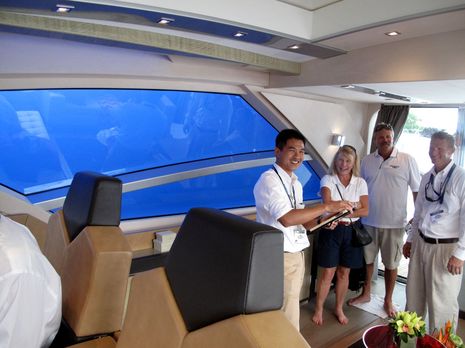
The Cheoy Lee Shipyard hasn’t been building ships and yachts since 1870 by resting on its laurels, and that young man — who apparently represents generation five of the yard’s continuous Lo family ownership — is obviously pleasing some prospective clients with his demo of the first Alpha 76’s unique “SmartGlass” system. I was impressed too. A slider on his iPad (or a wall switch) made those huge side windows go from crystal clear to deeply tinted to somewhat translucent but completely private. Even if there was a way to fit curtains without messing up the Alpha’s clean interior design, the SPD-SmartGlass technology seems cooler. And let’s further note that the iPad app in Lo’s hands controls much, much more than the windows…
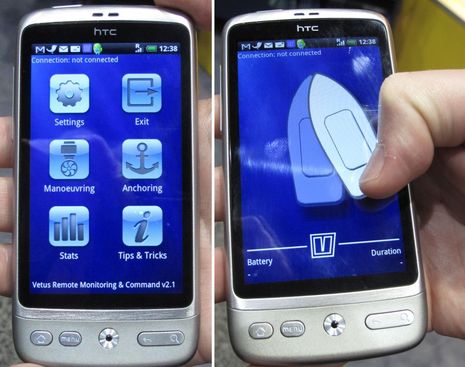
Vetus already had wireless remotes for its thrusters and windlasses, so why not develop a Bluetooth hardware interface and an app that can do more than even a wired control head using the smart phone many skippers already have in their pocket? I can’t find anything about this Remote Monitoring and Command app online but Vetus was showing it off at IBEX and it will probably be officially launched next month at METS. I understand that they’ll also have a new rim drive thruster there, and at Newport they were demoing a 4- and 5-cylinder diesel design that can supposedly benefit from its turbo at any rpm…
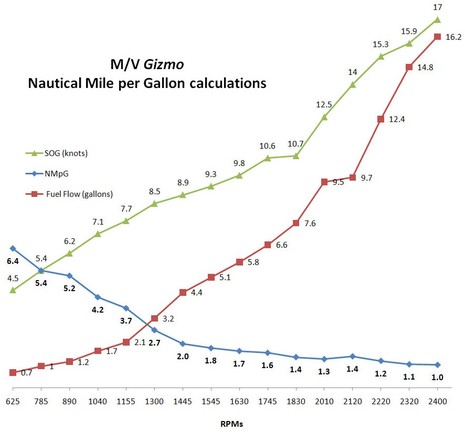
As illustrated above, the fuel cost for cruising Gizmo varies enormously with speed. It’s fortunate that we like poking along at 6 to 8 knots in most conditions because knocking off miles on a 16-17 knot semi-plane is 4-5 times more expensive. But as suggested by the lumpy lines, those fuel-flow versus boat-speed numbers are not necessarily precise, and since I was only able to collect them on one day, they definitely don’t reflect changes in vessel trim, bottom cleanliness, engine condition, etc. I’d love to have accurate real time fuel flow data flowing around Gizmo’s NMEA 2000 network and thus am excited about Maretron’s FFM100 system, which was recently introduced with bold claims…
I’m especially pleased to have discovered the Weld Mount system of glue-on cable and hose mounts because much of Gizmo is balsa cored and thus I’m darn hesitant about penetrating a fiberglass skin with screws....
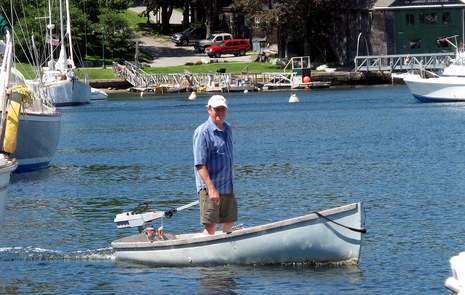
About two months ago I received a Torqeedo Travel 1003 for long term testing, I’ve used it almost every day since, and, well, the title tells the story. I simply adore this electric outboard! Admittedly certain personal traits may be in play. Historically small gas outboards are a significant exception to my generally high success rate with mechanical boating issues; possibly related is my annoyance with the smell and noise of the damn things (and the hearing aids don’t help); and, finally, a faulty shoulder makes starting even a lawn mower somewhat painful. But then again I did not fall so hard for the original Travel 801 model that I tried in 2009…
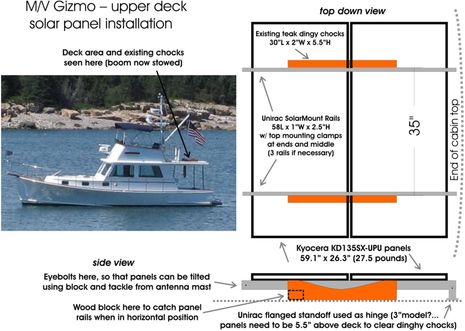
So maybe this is an all-about-Gizmo week. Given her multitude of electronics partly described on Monday, and the fact that the boat rarely sees shore power, plus how helpful readers were in spec’n out the ChartTable21 discussed yesterday (and yet more strain on the 12v bank), I’m keen to add some solar panels and I again seek advice. Oh, and while Gizmo does have a 6 kW generator, I don’t like running it, and would enjoy removing it altogether. I created the drawing above (PDF here) in an effort to explain to a solar salesman in Arizona what I was up to, but I haven’t purchased anything yet…
Maretron’s new DCR100 DC relay box will not create a true distributed power system because it doesn’t replace conventional circuit breakers. But it can give you some of the features — like extending switching...
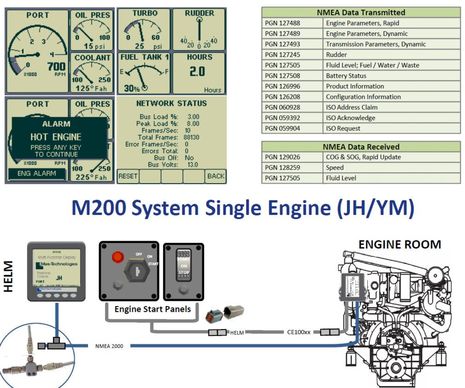
Thanks to Panbo reader Jeffrey Schwartz I just learned about the Mas-Technologies M200 system, which looks like it can neatly translate analog sensor data from Yanmar model JH, YM and LP diesel engines into NMEA 2000 PGNs that can be read by many displays, including its own. The system — which starts $1,469 — can also read four analog tank sensors and a rudder indicator, dual engines are supported, and Mas-Tech also offers start panels and even a wired shift-and-throttle remote. But something seems odd…

















